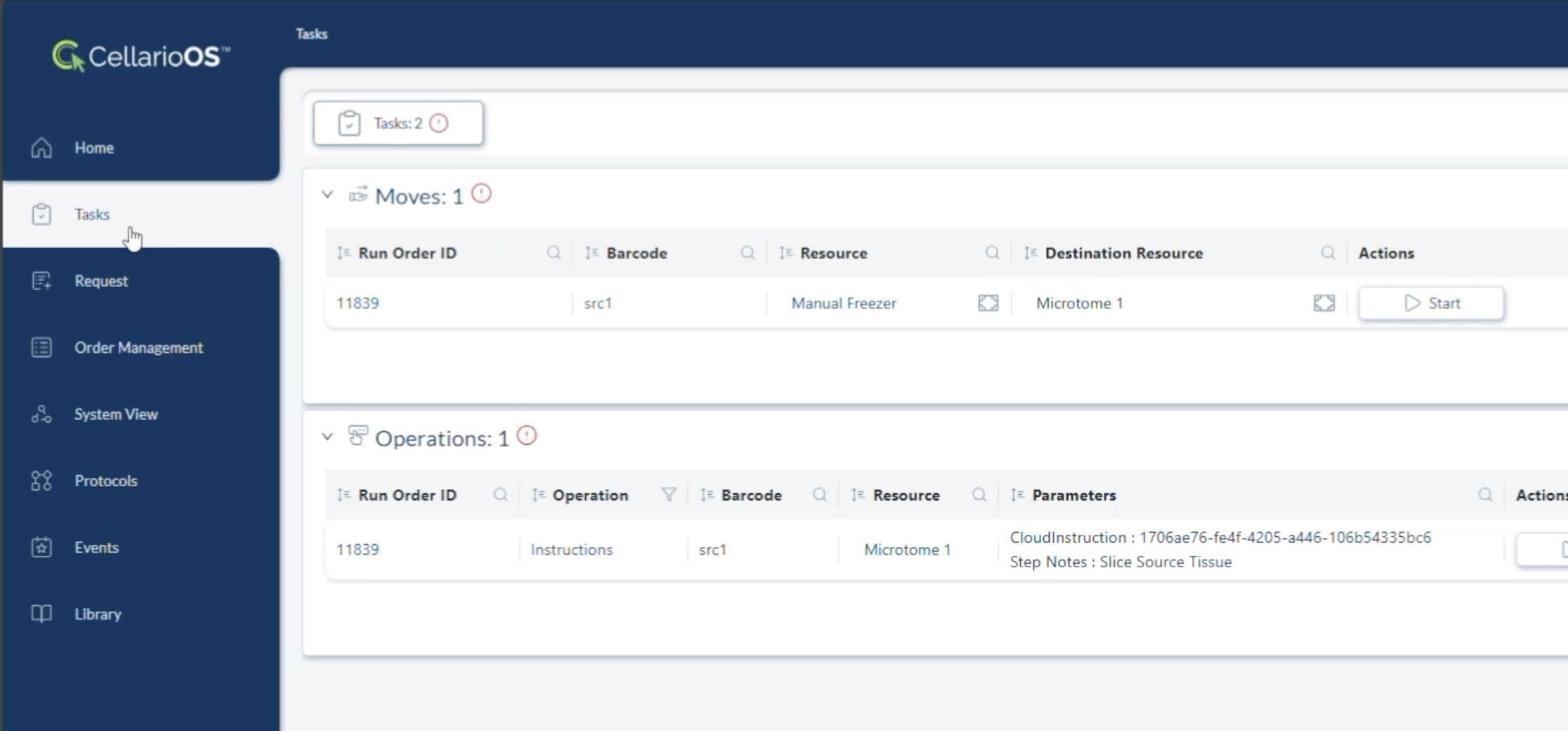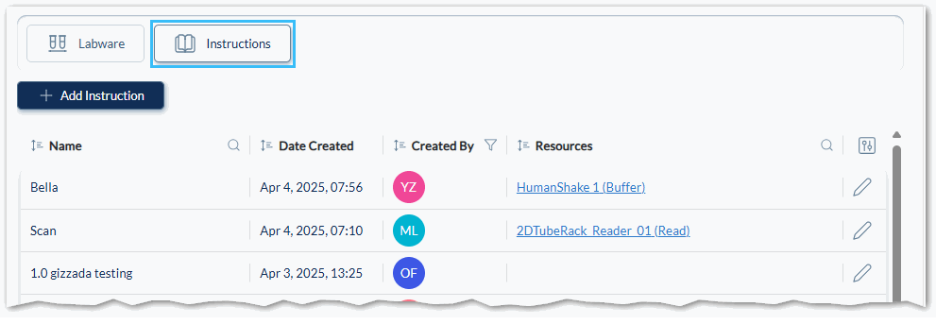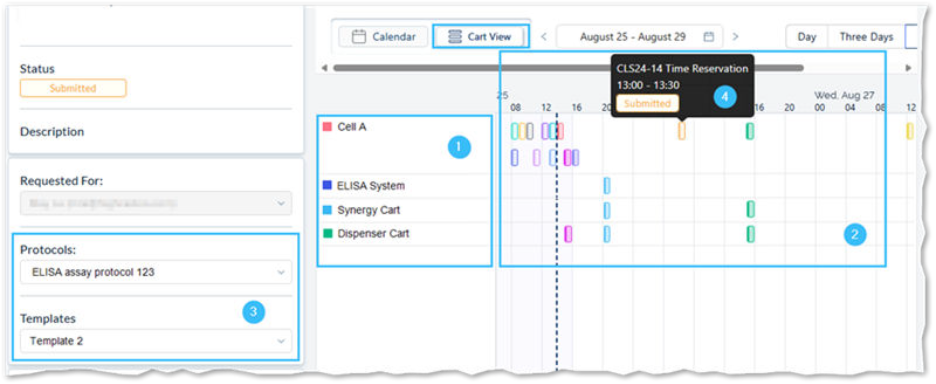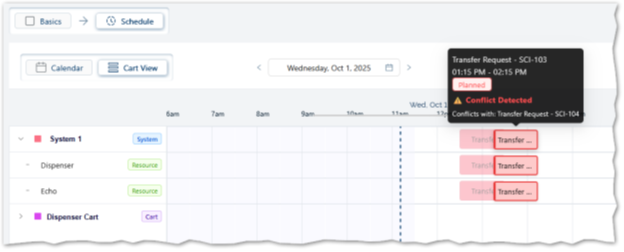
At HighRes Biosolutions, our mission is to automate and orchestrate every lab, from complex integrated systems to the everyday standalone instruments that keep science moving.
Over the course of 2025, we’ve advanced that mission through a steady evolution of CellarioOS, expanding its reach, intelligence, and flexibility to serve more users, more devices, and more workflows than ever before.
With the latest CellarioOS version 1.13, we’re introducing new capabilities that make orchestration simpler, more transparent, and more powerful across all parts of the lab, including manual steps, mobile carts, and shared devices.
Building on this Year’s Core Releases
Through 2025, CellarioOS has been all about empowering flexibility and reducing friction across labs of every scale:
1.8–1.9: Added task instruction libraries or "enhanced digital SOPs" that facilitate direct device control. We enabled integration with Scigilian, and splitting of large transfer orders. All of this brings together automated and non-automated workflows and deeper integration into the digital ecosystem.
1.10: Introduced quality control for liquid transfers and expanded the Instructions Library — Giving all laboratory tasks, whether automated or manually performed, a consistent and highly user-friendly experience in orchestration for any lab.
1.11–1.12: Delivered cart scheduling and Skip Approval workflows, enabling scientists to book and run experiments on movable carts and standalone devices with a smoother request process.
1.13: Extends orchestration even further with parallel requesting, ensuring seamless coordination between shared resources and simultaneous experiments.
Each release moves CellarioOS closer to a full view of every lab. Dynamic, data-driven, and harmonized.
Enhanced Digital SOPs
CellarioOS now extends orchestration to every part of the experiment, even when human interaction is required. Many scientific workflows include essential steps performed by a scientist manually, whether supporting the execution of a standalone device, transferring samples between instruments, or performing a series of hands-on procedures.
With enhanced Digital SOPs, these manual steps are now fully integrated into CellarioOS workflows. The platform can trigger devices, guide users through each action, and collect data in context, ensuring traceability and consistency across human and automated activities alike.
Reusable Instruction Libraries make it easy to create and standardize digital SOPs for common procedures. These can be applied across workflows, linked to specific instruments, or executed independently, giving scientists clear, step-by-step guidance and ensuring the entire lab operates as one coordinated system.

Figure 1. The instruction library shows guidance for manual operations.

Figure 2. CellarioOS task screen with instructions.
CellarioOS handles a mixture of automated and manually operated tasks through a short process (Video 1). The operator takes labware from a storage device, scans the barcode and then moves it to a CertusFlex dispenser powered by Cellario. Once the reagent is dispensed, the same plate is taken to a centrifuge by the operator, before finally being returned to storage.
Video 1. CellarioOS handles a mixture of automated and manually operated tasks through a short process
Dockable Resources
CellarioOS now has a deep understanding of the carts required for an order request and the reservations attached to the available carts. This means that, when creating a new order, you can view the available schedules and ensure there are no conflicts with the cart(s) you need. CellarioOS now provides a Cart View that shows all the resources needed to complete the order and their prior time commitments.

Figure 3. Viewing the availability of all the resources, including carts, as part of a Request.
You can see that different combinations of carts are in use for different prior requests, so one can best identify when all the carts they need are available for new requests (Fig. 3).
Parallel Requesting
Building on cart-based scheduling, CellarioOS now enables parallel requests, allowing multiple experiments to run concurrently — even when they share critical resources. The system detects overlaps, flags conflicts, and visually guides you to optimal scheduling windows. The result: higher utilization, fewer bottlenecks, and a more agile lab day.

Figure 4. Calendar view showing the sub resources, including carts for a request and a conflict created by overlapping tasks in parallel workflows. This triggers a user to move the tasks to suitable time slots to prioritize concurrent activities.
Integrations with from External Software
We now support the handling of orders directly from Mosaic by Cenevo and Scigilian. In addition, through the Extension Services API it is possible to configure integrations with other software packages such as ELNs and LIMS to handle orders and data.
Streamlined Requests
CellarioOS is built not only to support large organizations, with many layers of users, but also standalone labs trying to better manage their workload. With this in mind, we have also brought forward some simple improvements to make the process of requesting new orders quicker and easier.
When you are both the requestor and approver, it makes sense to skip the extra step. With the new Skip Approval step, you are one step closer to getting experiments running. Only those with the right permissions can skip the approval step which can be defined in the user rights and roles.
At HighRes Biosolutions we are absolutely committed to listening to our customers and developing tools that solve real problems. CellarioOS version 1.13 is another leap forward as part of continuous development this year that will accelerate next.
CellarioOS 1.13 Release Notes are available now.
